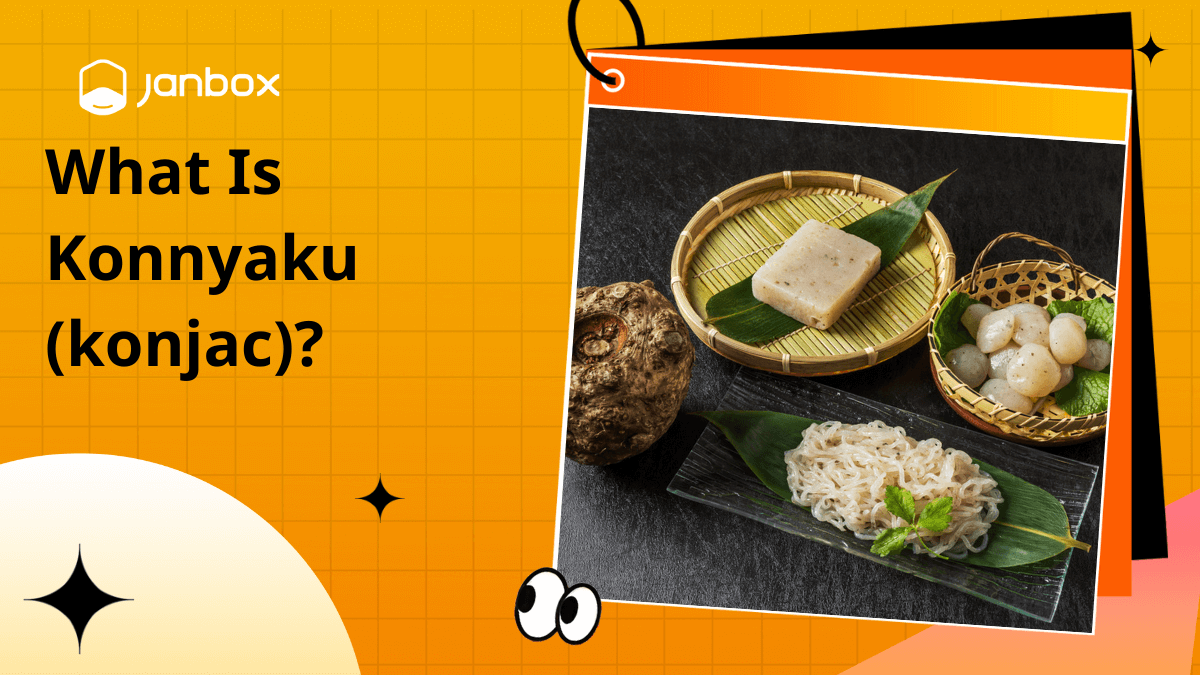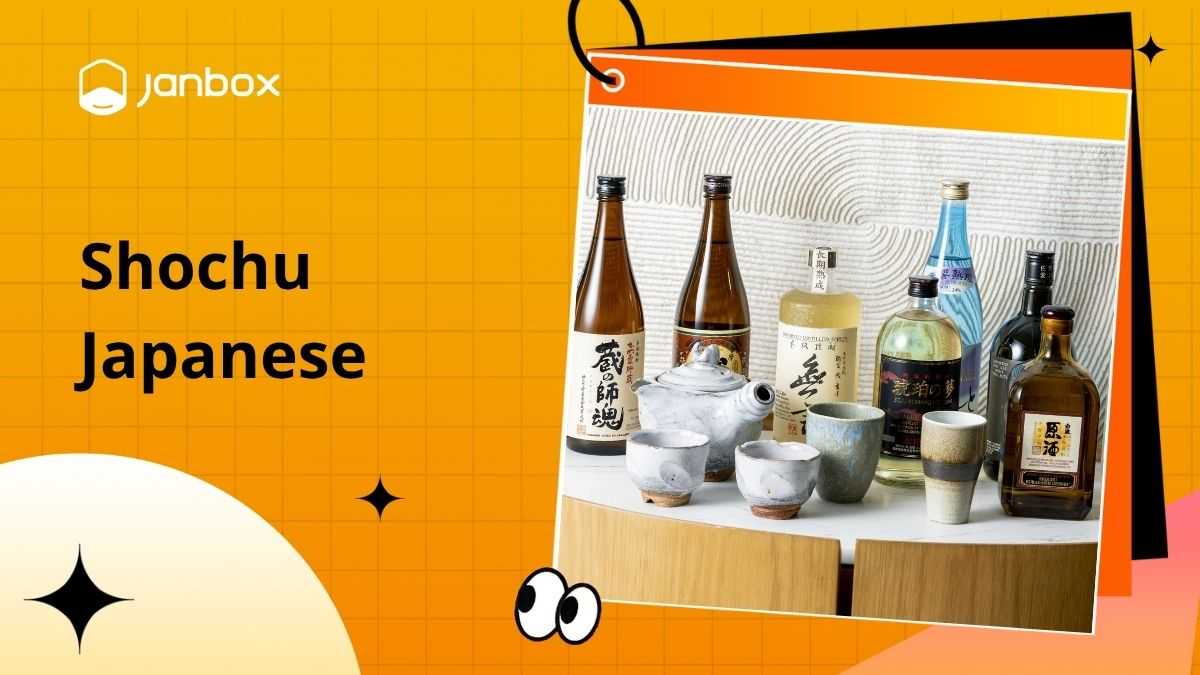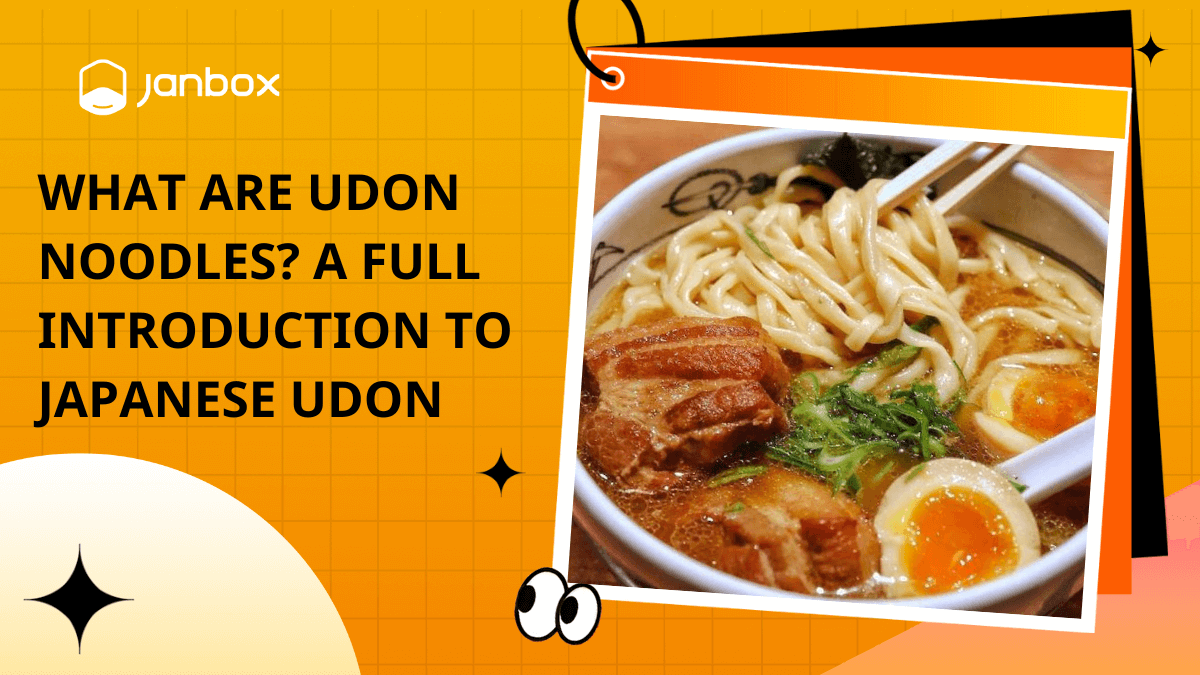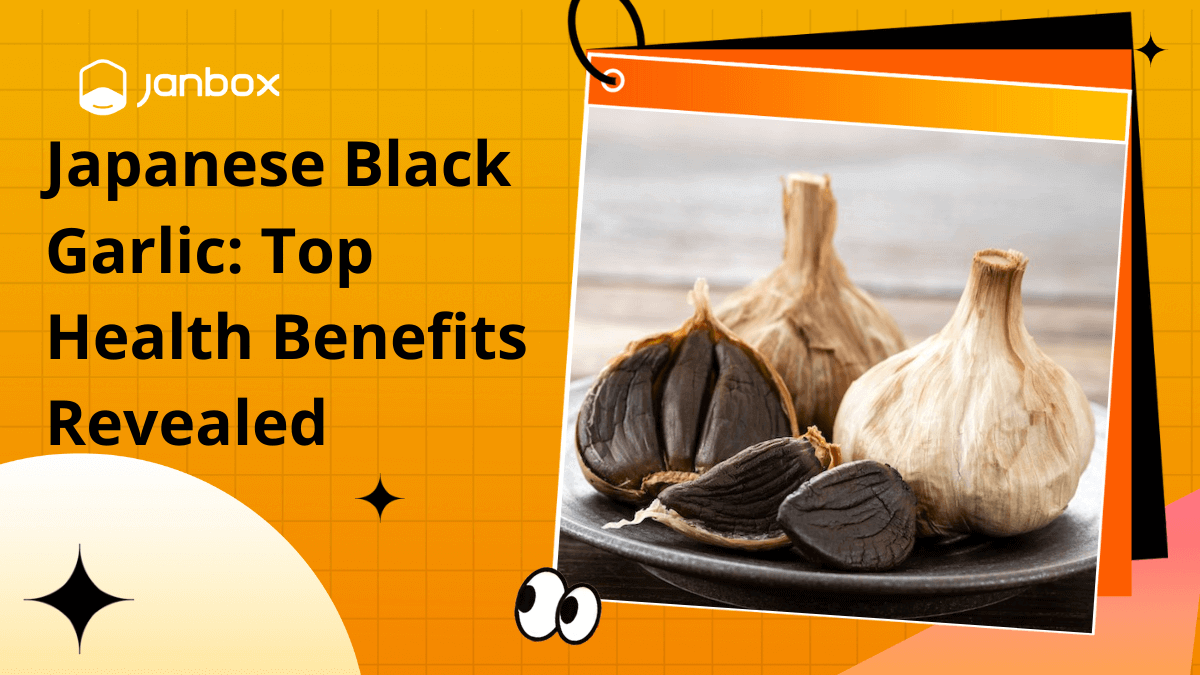There are many fascinating things in Japan that are typically unique to the country. They have a lot of unusual antiques, including relics from the samurai era. Additionally, they produce intriguingly distinctive works of art like Ukiyo-e. Aside from all of these elements, though, food is undoubtedly a distinguishing aspect of Japanese culture. One meal that stands out among many others is this nutritious jelly-like snack from Japan called Konnyaku.
1. What is Konnyaku (Konjac)?
Konnyaku, also known as konjac or “devil’s tongue,” is a traditional Japanese food made from the root of the Amorphophallus konjac plant. With a firm, gelatinous texture, this gray, rubbery block may puzzle first-time eaters—but it’s a culinary staple in Japanese cuisine, especially in dishes like oden and sukiyaki. Though virtually flavorless on its own, konnyaku excels at absorbing the rich broths and sauces it’s cooked in.
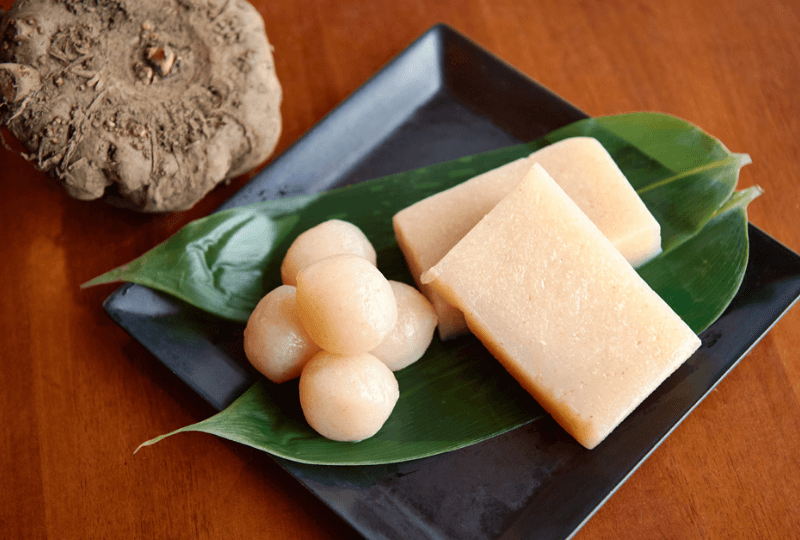
Introduced to Japan from China during the 6th century, konnyaku has long been prized not only for its versatility but also for its health benefits. It’s extremely low in calories and rich in glucomannan, a soluble fiber known for aiding digestion. Most konnyaku in Japan today comes from Gunma Prefecture in the northern Kanto region.
Often compared to jelly or rubber in texture, it’s an acquired taste and mouthfeel—but one that represents centuries of Japanese culinary tradition.
2. How to make konnyaku?
Konnyaku is traditionally made from the root of the konjac plant, often referred to as a “konnyaku potato” in Japan. It’s a meticulous process that transforms this humble root into the firm, bouncy jelly commonly found in dishes like oden and sukiyaki.
Here’s a simplified overview of how konnyaku is made:
- Harvesting: Mature konnyaku roots are dug up, usually after growing for 2–3 years.
- Washing and Peeling: The roots are thoroughly washed to remove dirt and impurities.
- Slicing and Drying: They are sliced into thin strips and sun-dried to preserve them.
- Grinding into Flour: Once dried, the strips are milled into a fine grayish-white konjac flour.
- Mixing with Water: The flour is combined with water to form a thick paste.
- Adding a Coagulating Agent: Calcium hydroxide (limewater) is added to firm up the mixture. This step is essential for achieving konnyaku’s distinctive texture.
- Shaping and Boiling: The paste is molded into blocks or noodle shapes, then boiled to set the jelly.
Cooling and Packaging: After boiling, the konnyaku is cooled, packed, and ready to be used in cooking.
Konnyaku can be eaten on its own or paired with flavorful broths and vegetables. It’s a simple ingredient with a unique texture that carries the rich heritage of Japanese cuisine.
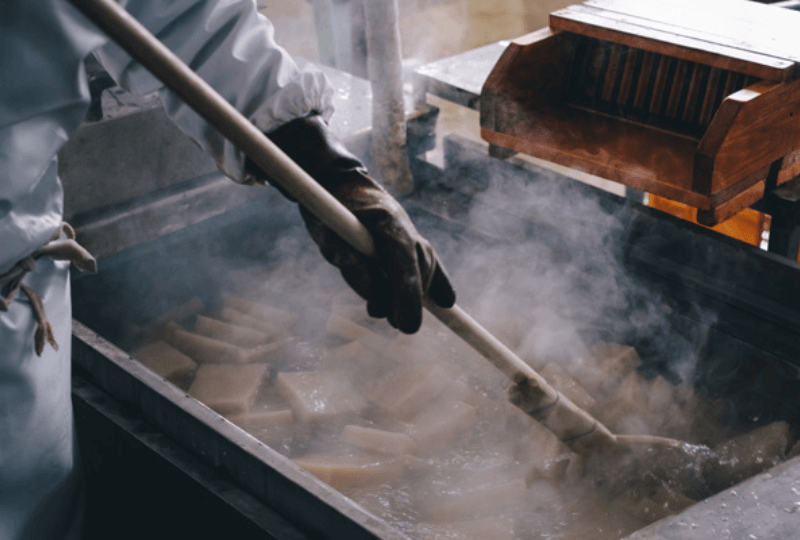
3. Nutritional Value and Health Benefits of Konnyaku
Konnyaku is not just a culinary novelty—it’s also a powerhouse of health benefits. Derived from the root of the konjac plant, this jelly-like food is prized for its high content of glucomannan, a water-soluble dietary fiber. With almost zero calories, no fat, and virtually no digestible carbohydrates, konnyaku is ideal for health-conscious diets.
3.1 Digestive health
Glucomannan acts as a prebiotic, feeding beneficial gut bacteria and improving digestion. It helps relieve constipation, promotes regular bowel movements, and is often used as a natural remedy for digestive disorders.
3.2 Weight Management
Thanks to its high fiber content, konnyaku expands in the stomach and increases feelings of fullness. This makes it an excellent choice for weight loss diets, reducing the likelihood of overeating or snacking between meals.

3.3 Cholesterol and Blood Sugar Control
Studies have shown that glucomannan can help lower LDL (bad) cholesterol by preventing its absorption in the intestines. It also slows the absorption of sugars, which may help regulate blood glucose levels—beneficial for people with diabetes or insulin resistance.
3.4 Additional Health Properties
Konnyaku is also associated with lower blood pressure, immune support, and anti-inflammatory benefits. Additionally, konjac-derived beauty products like konjac sponges are known for their skin-cleansing and acne-fighting properties.
By adding konnyaku to your meals, you’re not only enjoying a traditional Japanese food but also reaping a variety of wellness benefits that align with modern health goals.
>>> Read more: Bonito Flakes: What They Are & How to Use Them
4. Culinary Uses of Konnyaku
Konnyaku is a versatile ingredient that has been a cornerstone of Japanese cooking for centuries. Its firm, chewy texture and ability to absorb flavors make it ideal for both traditional and contemporary dishes. While nearly flavorless on its own, konnyaku comes alive when simmered in broths or marinated with bold seasonings.
4.1 Traditional Dishes
- Oden
One of the most iconic Japanese winter dishes, oden is a simmering hot pot of assorted ingredients like daikon radish, boiled eggs, fish cakes, and of course, konnyaku. The konnyaku soaks up the soy-based broth, adding a satisfying chewiness to every bite.
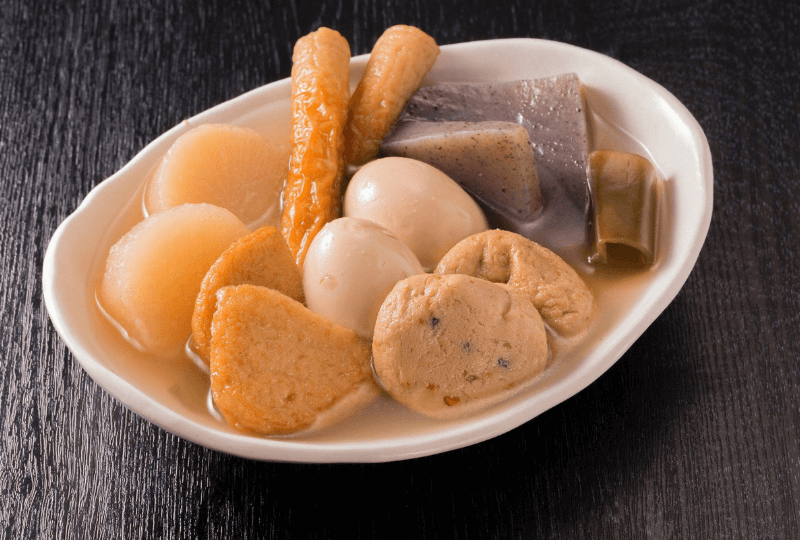
- Tonjiru
This hearty miso-based soup features thinly sliced pork, root vegetables, and konnyaku. In tonjiru, konnyaku complements the umami flavors and adds texture contrast without increasing calories or fat. - Kimpira Konnyaku
A simple yet flavorful stir-fried dish, kimpira konnyaku combines shredded konnyaku with soy sauce, mirin, and sesame oil. It’s often served as a side dish or part of a traditional Japanese bento.
4.2 Modern Recipes
- Konnyaku Steak
A favorite among vegans and health-conscious eaters, konnyaku steak is seasoned and pan-seared to mimic the texture of meat. It’s high in fiber, low in calories, and perfect for plant-based diets. - Konjac Jelly Snacks
Popular across Asia and beyond, these sweet, chewy jellies are made from konnyaku flour. They are low-calorie, come in various fruit flavors, and make for a guilt-free snack option.
From traditional soups to innovative meat substitutes, konnyaku’s adaptability continues to shine in both home kitchens and gourmet restaurants.
5. Where can you buy konnyaku?
If any Asian or Japanese grocers are located nearby, they frequently carry konnyaku. You can purchase such noodles from significant shops in Australia as well. Additionally, you may buy it online from stores like Amazon, eBay, and many others on Janbox.
>>> Read more: Konbumaki – The lucky meal in Japanese culture
6. How to cook konnyaku?
Any dish that includes konjac is a terrific complement because it effectively transforms it into a healthier meal. You have the option of using prefabricated konnyaku blocks, noodles, rice, and many more forms that you can purchase from your local grocery store. Fresh konnyaku made from the plant’s corm is also available. There is no need to worry about choosing fresh or processed konjac because their nutritional qualities are similar, making either option a healthy one.
Now have a look at some konnyaku recipes you can try and how:
- Konnyaku noodles
Konnyaki noodles are created by shaping your mixture into noodles or rice-like shapes. They are also known as shirataki noodles or “white miracle noodles” due to the health advantages they offer.
To enjoy a tasty, nutritious dinner, mix them with meat and veggies or add sauce.
- Konnyaku jelly
Wondering how to make konnyaku jelly? Konnyaku jelly is made by boiling konjac powder with water. It produces a jelly-like consistency that is slightly chewier than typical gelatin products.
The fruit flavor is usually added, and it can be served in miniature molds or plastic cups as a bite-sized dessert.
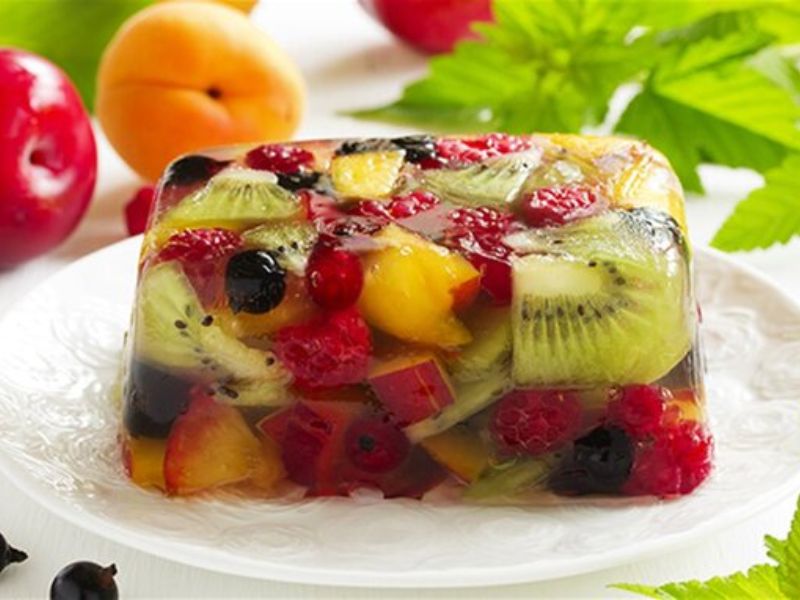
- Konnyaku yam cake
Konnyaku can be served as a mushy cake-like loaf due to its fluid nature. It is customary to use sauces and spices to cover up the dull flavor. Dashi, soy sauce, and chili pepper are a few examples.
The level of spice in the cakes can vary depending on what you add. The cake can be cut into pieces or served on a stick.
- Tama konnyaku balls
Tama konnyaku balls are one of the numerous varieties of konnyaku. The majority of the time, they are prefabricated servings that may be added to a number of foods.
You could use teriyaki sauce or another sauce of your choice to glaze them, for example. Then combine them with meat and vegetables, skewer them, and have a tasty barbecue-style supper!
- Konnyaku sashimi
As was already mentioned, the konnyaku is available in a variety of forms, including the packets of sashimi that are now also sold in stores. Depending on the flavor of the konnyaku, these pre-sliced sashimi are either green or yellow in hue. While yellow sashimi typically has citrus flavors, green sashimi is typically flavored with fish. To give the chewy jelly in this konnyaku sashimi a little crunch, it can also be lightly scorched on a skillet. You can have a supper that is both healthful and filling by adding only a tiny bit of wasabi paste and some soy sauce or mustard sauce.
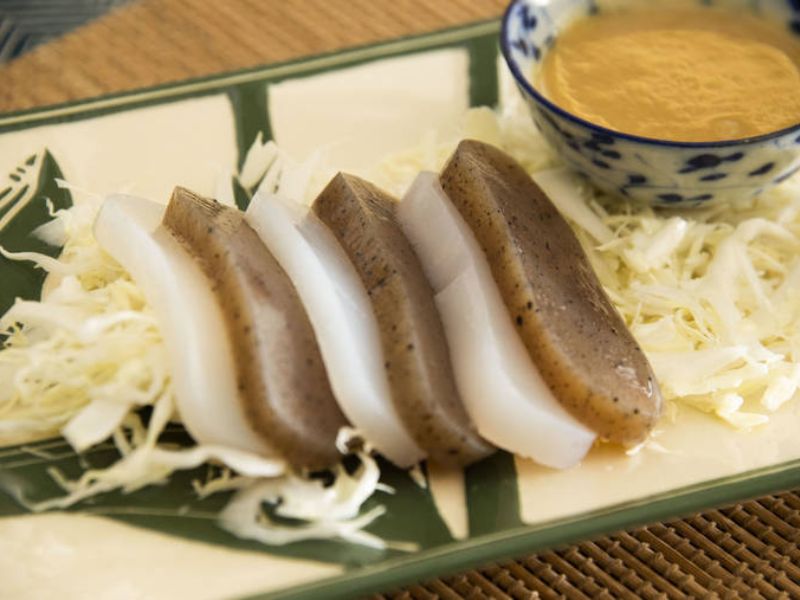
- Simmered Konnyaku with beef
You might try making the “Simmered Konnyaku with Beef” if you want a dish that takes more effort to prepare. To cook this dish, you will need:
- 4 ounces of stewing beef (cut into half-inch cubes)
- 3 tablespoons of cooking oil
- 3 cups of dashi
- 2 tablespoons of soy sauce
- 2 tablespoons of mirin
- 2 tablespoons of sake
- 1 teaspoon of sugar
- and 2 tablespoons of miso paste
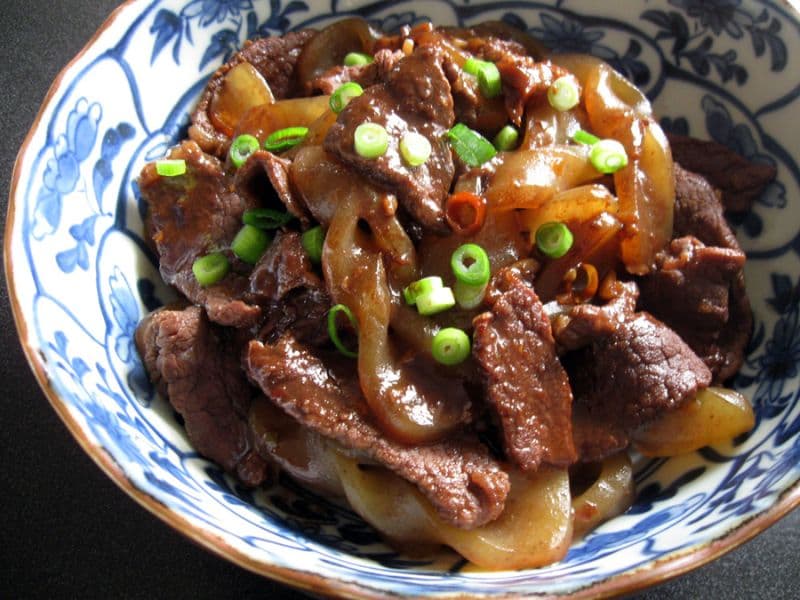
Then it’s time to cook:
- In a medium-sized pot, heat the water until it boils. Konnyaku block is added. Cook for ten minutes. Drain and get rid of water.
- Make ½” thick cubes out of the konnyaku by cutting it lengthwise into two even blocks. Next, take each cube and make a series of tiny horizontal and vertical cuts to allow liquids to pass through. Set apart.
- Heat a skillet over high heat. Cooking oil should be added. Then brown the cubed beef on all sides. Using a slotted spoon, remove from the pan. Sauté the konnyaku in the remaining fat until the surface is slightly blistered and browned. Set aside after removing from the heat.
- In a medium saucepan, combine the beef and konnyaku, dashi, soy sauce, mirin, and sake. Bring to a boil, then reduce to low heat and cook for 1 to 1,5 hours, or until the meat and konnyaku are soft.
- Stir in the miso paste until it dissolves.
If these above dishes aren’t enough for you, you can easily search the internet for more konnyaku-based dishes, such as “Konnyaku Acqua Pazza with Root Veggies” or “Konnyaku Chocola,” a dessert that may be the healthiest dessert you’ll ever consume in your life. Since konnyaku is generally used as a meal replacement for common carbohydrates, you can experiment with any recipes as long as you know how to prepare the konnyaku to acquire the texture you like.
>>> Read more: How To Buy From Rakuma Japan: A Thorough Beginner’s Guide
7. Conclusion
Given all the benefits of konnyaku, it is not unexpected to see more dishes and textures on the market these days. With the globe heading toward healthier and longer lives, it is a no-brainer that many people will include konnyaku in their diets. And because it is a plant, it is also a fantastic alternative for vegetarians. The best approach to satisfy your curiosity is to go out and taste the konnyaku for yourself if, after all this debate about it, you still find yourself wondering why it’s so well-liked. Without a doubt, you will stand to gain everything.
Website: https://janbox.com
Email: [email protected]

